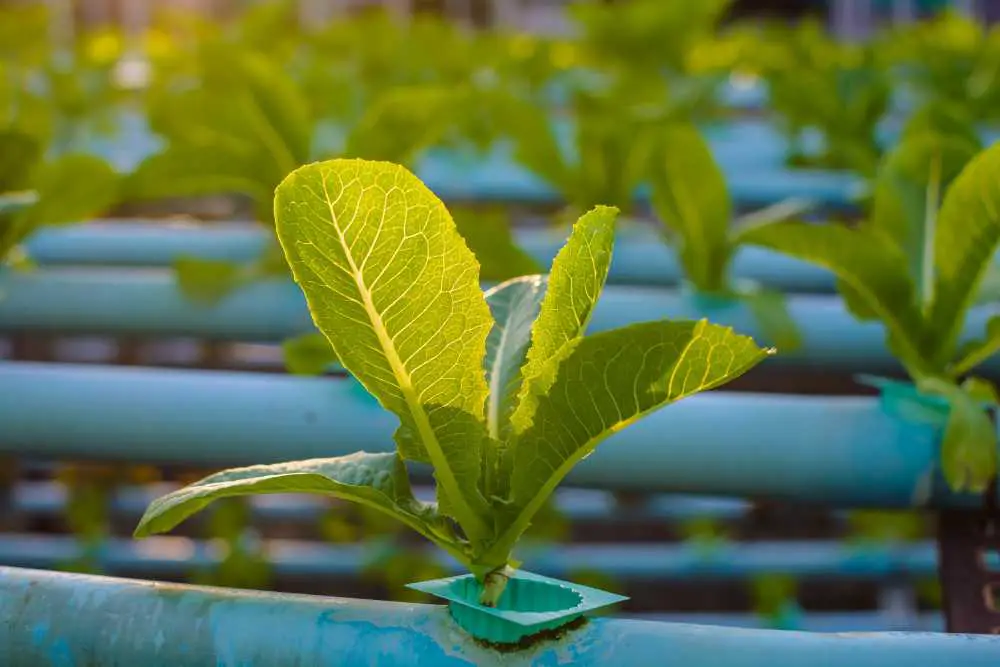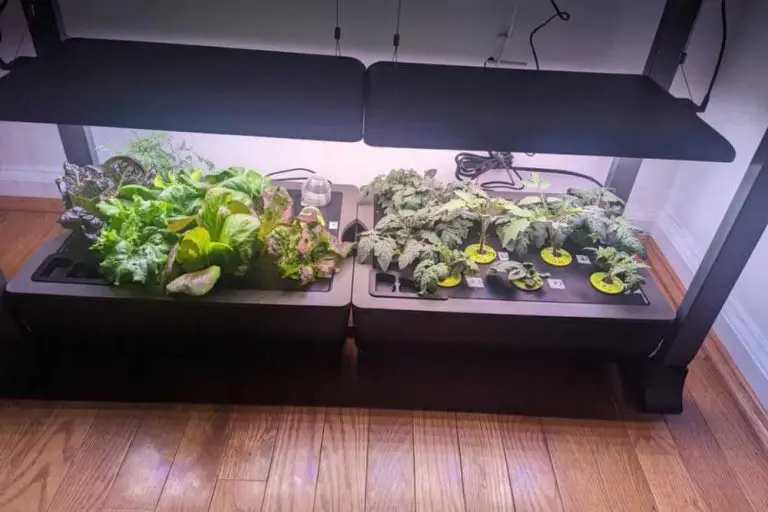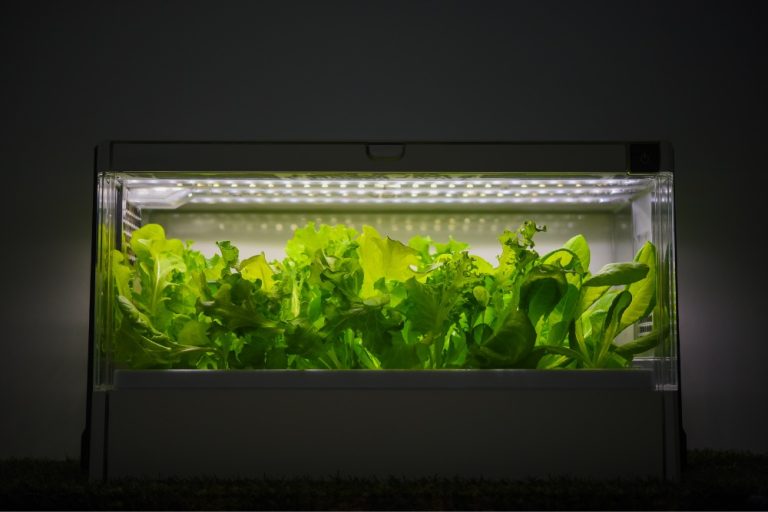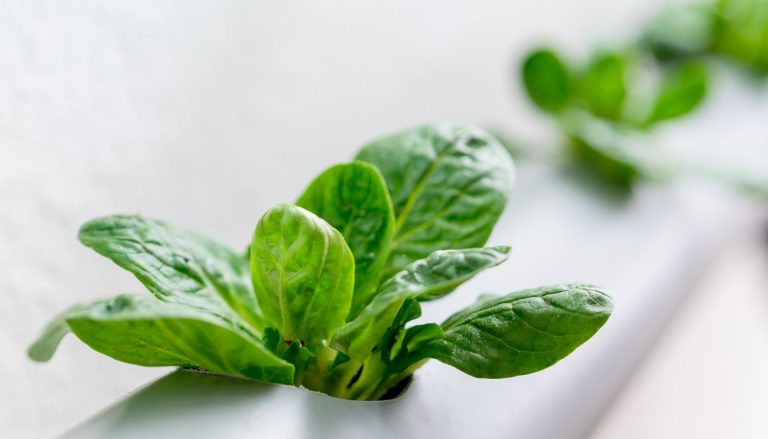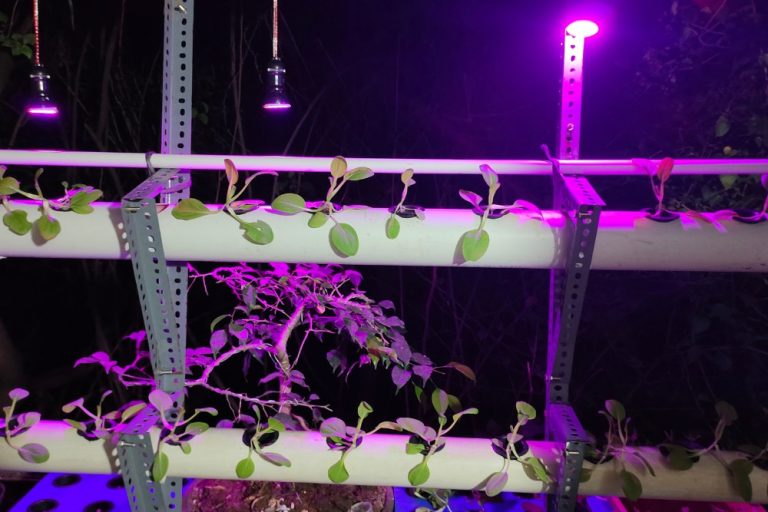27 Hydroponics Advantages and Disadvantages: Is It Worth the Hype
Hydroponics is a new trend in indoor or urban gardening that uses only water and a medium to produce plants. Crops grown hydroponically are those that are grown in nutrient-rich liquid solutions as opposed to soil or other synthetic plant bases. While some growers of greenhouse crops use peat, clay pellets, wood fibers, or even polystyrene packing peanuts as media, growers of hydroponic crops utilize something a little cleaner and more environmentally friendly: Water.
When considering hydroponics advantages and disadvantages, it becomes evident that this innovative cultivation method presents both strengths and weaknesses for modern agricultural practices.
Vegetables, foliage plants, and other crops can be produced successfully using hydroponics. There are a lot of important aspects to consider while putting up a hydroponic system. Does it have any advantages or disadvantages?
These are just a few of the numerous questions we’ll address in this post. We’ve developed a list of advantages and disadvantages to help you decide whether to build a hydroponic system. Check it out to see whether it’s right for you.
16 Advantages of Hydroponics
1. Hydroponics Saves Space
One benefit of hydroponic systems is that they allow farmers to grow more plants in the same amount of space while using less space than soil-based techniques. Hydroponic farming eliminates the need for enormous agricultural land because it enables you to grow crops in greenhouses or even in the desert sands.
For plants to spread their roots widely enough to locate water and all the nutrients they need to survive, plants grown in the soil must typically be planted at specific intervals apart from one another. However, roots are not required to spread in hydroponic systems because water and nutrients are given directly to the plants. In a way, you can grow crops with little available land, no available land, or extremely contaminated soil.
2. Creating Food of the Highest Quality
Creating Quality Food to Supply a Growing Population Growers do not use pesticides in a hydroponic system because the indoor location reduces the likelihood of pest invasion. Additionally, plants can grow more quickly and remain disease-free because they receive the necessary nutrients directly in a solution. The hydroponic system can accommodate a bigger population in urban locations and produce high-quality produce, increasing access to fresh food in urban areas.
3. Increased Yield
The amount of output that farmers produce from their farmlands is one of the major issues they encounter. Farmers frequently experience crop failure owing to erratic monsoons and poor irrigation systems. Because they rely on the produce to support their daily life, all these variables might occasionally cause farmers to experience severe financial stress.
One of the most significant advantages of hydroponic farming is the capacity to grow vegetables all year. More crops can be successfully grown in a smaller area with less water. In this way, the problem of less water availability is reduced.
4. Effective Use of Local/Regional Diversity
Saving space is one of the major benefits of hydroponic gardening. Traditional farming requires plants to look for nutrients in the soil, which causes plants to develop deeper roots. On the other hand, in hydroponics, the roots are not required to look for nutrients because they are directly delivered to them. Hydroponics is a great option for city inhabitants who live in enclosed areas, desert-prone places, and extremely cold regions as well because plants with less dense roots take up less space.
5. Fruits and Vegetables aren’t Your Only Options
Some people swear by herbs cultivated in hydroponic systems. Hydroponics allows plants like mint, basil, cilantro, and chives to grow incredibly well and quickly. Mushrooms are equally as simple and easy to grow.
6. No Pesticides
One indoor growing method that includes gated access is hydroponics cultivation. The insects find it more challenging to enter the system and harm the plants. The plants are also protected from soil-borne pests thanks to this type of cultivation without soil. You are protecting your crops from diseases like Rhizoctonia and Fusarium.
7. Optimal Use of Nutrients
In hydroponics, nutrients are directly given to plants while minimizing loss. How nutrients are delivered to and absorbed by plants is made easier by the hydroponics system overall. This is because, in hydroponics, it is feasible to guarantee that the proper nutrients are provided in the proper quantity to support plant growth. The way the nutrition solution is applied also makes sure that neither water nor nutrients are wasted during the process. Leaching of nutrients, which is quite typical in traditional agriculture, is not a possibility with hydroponics.
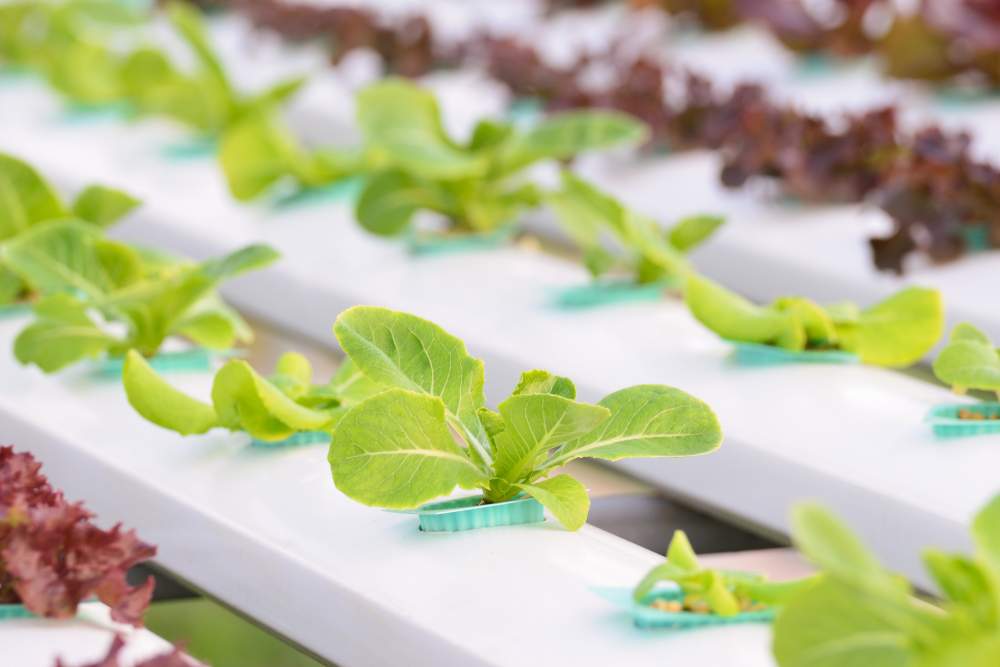
8. Less Time and Energy Consumption
Farming in hydroponics requires less time and energy as inputs. This indicates that hydroponic farming often involves less work than conventional farming. While this is true, there are several points of contention. One of them is the fact that farming using hydroponics is typically done on a smaller scale than traditional agriculture.
Herbs, vegetables, and fruits are among the plants that do well in a hydroponic environment, and each of these groups requires significantly less labor during production than other plant types. In particular, whether carried out in a large-scale, commercial, or complex context, hydroponic farming can be time-consuming. In contrast to conventional agriculture, attention is given to minute elements including nutrient provision, pH control, and temperature regulation.
9. It’s simple to maintain the pH balance
It may be necessary to bring in truckloads of topsoil or use specialized fertilizers to control the alkalinity or acidity of plants grown in soil. To achieve the ideal pH in a hydroponic system, you simply need to test your water and add a buffering solution. Finding the ideal conditions for your plants’ growth is much simpler.
10. You Conserve Lots of Water
Hydroponically growing plants still use a lot less water, even when water is replacing the soil in the process. Compared to crops cultivated in a field, hydroponically grown crops consume only a tenth of the water. That represents a significant environmental saving. In addition to saving you money on your water bill, the compromise also has a significant positive impact on the environment particularly if you are growing in a region where water is scarce.
Another advantage of hydroponic gardening is that the chemically enhanced water that we use to nourish the plants may be recycled again. A large amount of water is utilized in traditional farming to produce a low yield.
Because of the current water shortages the world is experiencing, this water loss is devastating to the local population. As a result, another advantage of hydroponic growing that assists farmers is water saving.
11. The Production Process Is Under Producer Control
The flexibility of hydroponic farming allows the farmer to choose what to grow, when to grow it, and how to grow it. Only the farmer may select what chemicals are necessary to feed the plant. Additionally, the farmer will decide when to plant a crop since he creates a microclimate; there is no need to wait for the seasons or the monsoon. This implies that a farmer can cultivate a crop all year round, greatly enhancing predictability.
12. Low Cost of logistics
The cost of transportation drastically reduces the income of farmers. Either the goods are harmed, or the farmers bear a heavy financial burden due to the cost of transportation. Given this situation, hydroponic farming is advantageous to struggling farmers because it enables them to grow their produce anywhere they choose, possibly close to the market. Since soil is not used, the location of where plants are grown doesn’t matter because topsoil is not required.
13. Disease and Pest Control
With hydroponics, plants are less likely to be harmed by diseases and pests typically connected to the soil, such as diseases like Rhizoctonia and pests like birds, insects, and small mammals. The majority of hydroponic farming businesses are also indoor activities. This lessens the amount of time that plants are exposed to diseases and insects. But because the process is largely carried out in water, a case of waterborne illness could happen.
14. Control of Weeds
Weed growth is reduced in hydroponics because of the carefully managed cultivation conditions. The nutrients that are given to a plant are often appropriate for that specific plant and may not be able to sustain the growth of other plants, including weeds. Additionally, getting rid of weeds when they appear is simpler because of the lack of soil and the organized design of hydroponic systems.
15. Sustainable Production and Hydroponics
Due to its effective resource recycling and reduction of potential environmental issues, hydroponics is a sustainable technique for growing plants. Sustainable economic growth is a fundamental component of sustainability. Economic expansion in the agricultural sector may be sustained with hydroponics since production can be optimized without depleting resources such as land, water, and mineral nutrients.
In hydroponic farming, the land is preserved by growing plants in a well-organized arrangement, such as the vertical cultivation framework. By employing a reusable nutrition solution, soil, and minerals are preserved. Hydroponic farming is more sustainable when these materials are conserved.
Hydroponics is also sustainable because it can be performed in controlled, ideal settings for temperature, oxygen supply, sun energy for photosynthesis, and pH, because it does not rely substantially on outside environmental conditions. This suggests that crops can be grown hydroponically all year long and that environmental issues like climate change and extreme weather don’t have an impact on variables like growth rate and overall crop production.
Having plants inside the home throughout the darker, colder months of the year can help those of us who experience SAD feel better. The humidity in the house can be enhanced by having a hydroponic garden inside, which also helps control the temperature there. This can lift your spirits even more.
16. Each Harvest is a Clean Harvest
When farming with soil, you have to spend a lot of time, effort, and water cleansing the produce of dirt, chemicals, and pests before it can be sold. When growing plants in hydroponic systems, they are already clean, dry, and prepared to be harvested and consumed when fully developed.
10 Disadvantages of Hydroponics
Hydroponics has drawbacks, just like every other type of farming. Some of these drawbacks of hydroponic farming will be covered in more detail in the section that follows.
1. High Price
The equipment, knowledge, and ongoing monitoring needed for hydroponic gardening make it quite expensive. A hydroponic system must be constructed with components including the growing medium (perlite or vermiculite), containers (trays or net pots), pumps, water tanks, filters, fertilizer, and lighting. All of these elements indicate considerable costs. The type and dimension of the system determine the cost of installing and maintaining a hydroponics system.
2. The Tendency for Waterborne Illnesses
While using a hydroponic system to produce plants helps reduce the danger of soil-borne diseases, the constant flow of water through the system increases the likelihood that the plants will become infected with some waterborne diseases. From one plant to the others, these diseases can occasionally be spread by the water solution. All the plants in the system might be destroyed as a result of this.
Compared to plants cultivated in soil, hydroponic plants are much more likely to be infected with waterborne diseases. This is understandable given that hydroponic plants are primarily cultivated in water (which contains dissolved nutrients). The majority of hydroponic farms and gardens recycle the nutrient solution, which raises the risk of dangerous pathogens being introduced into the solution at any time.
Hydroponics systems are prone to the rapid spread of waterborne infections due to the intimate contact that plant roots have with the fertilizer solution. When proper hygiene is not maintained, microbial biodegradation may cause toxic substances to spread and hazardous bacteria and fungi to flourish in hydroponics systems.
This poses a serious concern because all or the majority of the plants in the system may be simultaneously impacted, and the plants typically share a common infrastructure and nutritional supplements. In hydroponic systems, it can be difficult to separate infected plants, and once an outbreak of a waterborne illness starts, it can be challenging to control its consequences.
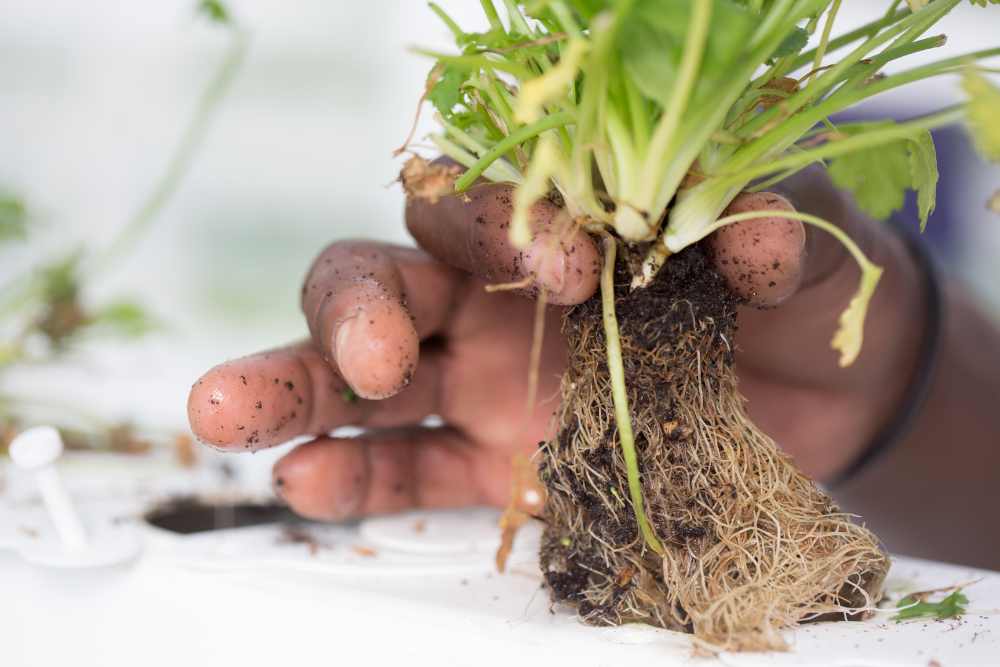
3. Capacity Limitations in Production
The production capacity of hydroponic farming is still far lower than that of traditional farming, despite the ability of many hydroponic systems to conserve space. This is primarily because hydroponics is still a new technique. Inconveniently, hydroponics is not always appropriate for large-scale plant production due to the difference in production capacity.
4. High-Level Maintenance and Monitoring
The many components of a hydroponic system work together to ensure the continuous delivery of nutrients to the plants. Growers need to exercise extreme caution in order to prevent the failure of any of these components. Constant monitoring is essential to ensure that the pumps are running properly and that the temperature and lighting are suitable.
In order to ensure the operation is successful, hydroponics farming typically requires a high level of effort in the form of maintenance and monitoring. In traditional farming, the environment provides many of the conditions needed for plant growth. This indicates that such agricultural approaches do not necessitate careful oversight and management of the specifics of plant cultivation.
However, hydroponics necessitates a closer examination and control of the plant-growth environment. Pumps and growing lights are examples of the electrical components included in hydroponic systems; thus, it is necessary to check how well they work constantly. Monitoring and maintaining a system can take a lot of effort, and doing it correctly sometimes calls for special knowledge.
5. Electricity and Water Risks
In a hydroponic system, water and power are mostly used. A combination of water and electricity should not be used in close proximity. In particular, in commercial greenhouses, always prioritize safety when working with the electrical and water systems.
6. Technical Requirements for Hydroponics
For hydroponics to produce its best results, a moderate level of technical understanding is always necessary. This contrasts with traditional agriculture, which usually only needs labor-intensive tasks like tilling, weeding, planting, and harvesting. The requirement for technical proficiency in hydroponic farming indicates that persons without appropriate knowledge of the technical procedures involved cannot use the system efficiently. Skills and technological expertise
You are managing a system with a variety of equipment, necessitating specialized knowledge of the tools used, the kinds of plants you can produce, and how they can survive and flourish in a soilless environment. If you set up the systems incorrectly and plants can’t survive in this environment without soil, your entire progress will be undone.
7. Extended Return on Investment
Some new indoor hydroponics systems have been launched recently if you keep up with start-up news in the agriculture industry. This is advantageous for the growth of hydroponics and the agricultural industry. When utilizing hydroponics on a large scale, commercial producers still encounter a number of significant difficulties.
This is partly due to the high upfront costs and the lengthy, unreliable ROI (return on investment). While many other intriguing high-tech disciplines appear to be pretty promising for funding, it is challenging to outline a clear lucrative plan to argue for investment.
8. Insufficient Soil Buffering
Buffering capacity for soil is only the capacity to withstand change. This resistance to change frequently manifests as the absorption of excessive materials, which can upset the physicochemical equilibrium of the soil. By buffering the soil, it is possible to keep the soil’s pH, moisture, and nutrient availability within controllable ranges. Since hydroponic farming doesn’t use soil, these factors must be artificially controlled. As a result, hydroponic plants are at risk of suffering the harmful effects of any mistakes that may be made.
8. Risks of System Failure
To operate the entire system, you use power. As a result, if you do not prepare for a power loss, the system will stop functioning instantly, and plants may dry out quickly and die in a few hours. As a result, it’s important to always have a backup power supply and strategy in place, especially for large-scale systems.
9. Organic Deliberations
There have been some contentious debates about whether hydroponics should receive organic certification or not. People wonder if hydroponically produced plants would acquire the same microbiomes as those found in soil. However, Gardeners have been cultivating hydroponic plants for a very long time, particularly in Australia, Tokyo, the Netherlands, and the United States.
These plants include lettuce, tomatoes, strawberries, and other crops. Millions of people have received food thanks to them. Nobody can anticipate perfection in life. In comparison to hydroponics, there are still more pesticides, pests, and other risk factors for soil-based growth. For hydroponic producers, a few organic growth techniques are recommended.
For instance, some farmers use organic growing media, such as coco coir, and add worm casting to it to provide plant microbiomes. Fish, bones, alfalfa, cottonseeds, neem, and other naturally occurring nutrients are frequently employed. More research will be done now and soon for this argument about the issue of organic products. Then, we’ll be able to tell the result.
10. Hydroponics is Effective for Specific Plant Types
One of the hydroponics’ drawbacks is that only a small subset of plants can be successfully grown using this technique. This is due to the fact that not all plant kinds can benefit from hydroponics’ method of fertilizer supply and plant growth.
Plants that thrive in hydroponic systems often have simple root structures and low nutritional demand. This includes fruits, vegetables, and herbs, which is why they are frequently grown on hydroponic farms. On the other hand, hydroponics is not appropriate for plants with complex root systems and higher fertilizer requirements.
Hydroponics ‘ inability to effectively grow them is a significant disadvantage since these plants make up the majority of significant food crops.
Final Thought
Hydroponics has drawbacks, just like anything else in life. However, most of these are manageable with enough preparation and experience. Hydroponics is worthwhile, considering the benefits it might provide. Meanwhile, hydroponics has enormous potential. The hydroponics sector is likely to grow rapidly in the following years.
- 29 Bucket Gardening Ideas for a Lush, Compact Garden - October 30, 2024
- 20+ Chic Boho Bedroom Ideas for a Cozy and Stylish Retreat - June 20, 2024
- 12+ Modern Boho Living Room Ideas to Create a Unique Oasis - June 10, 2024

